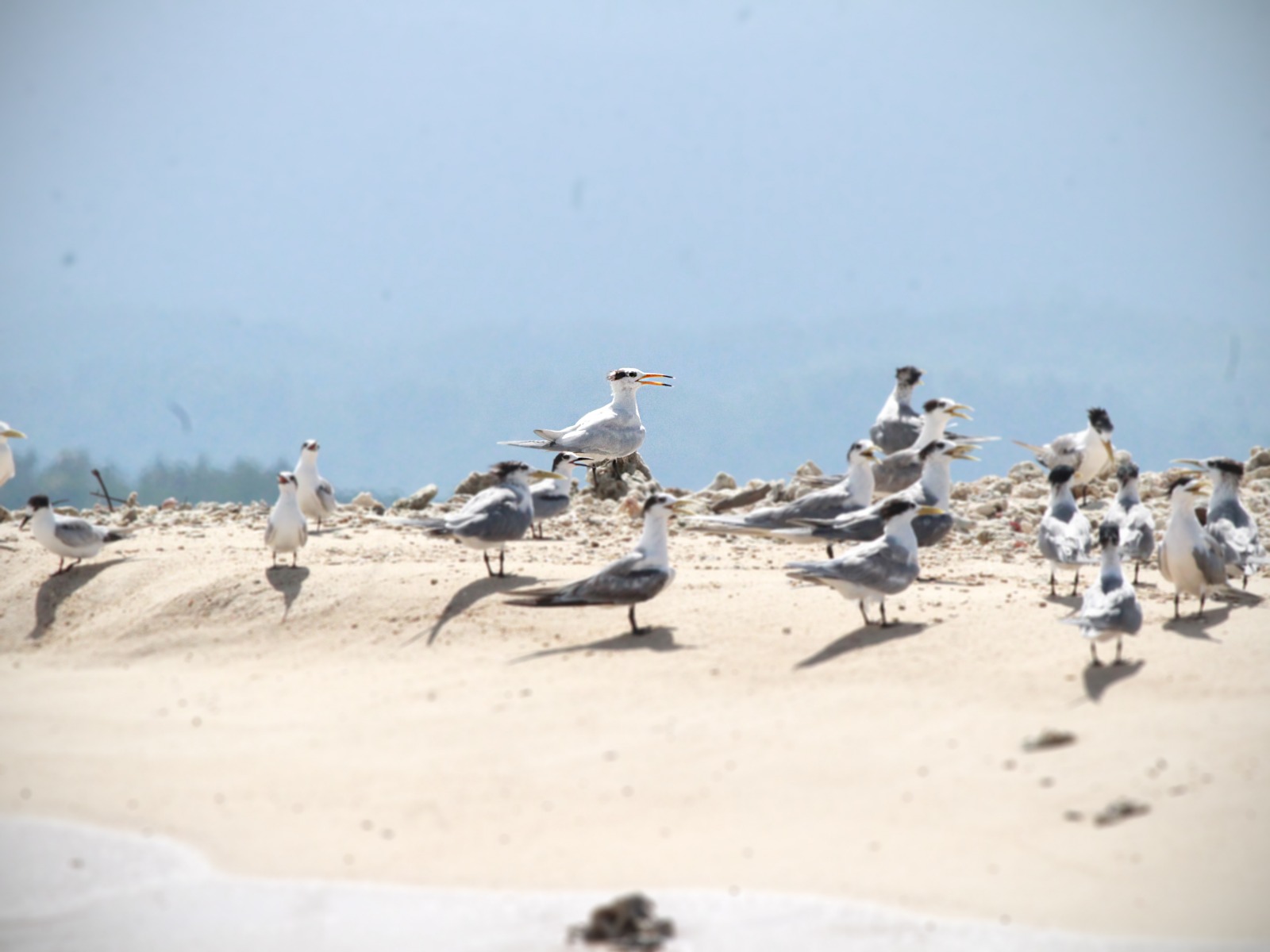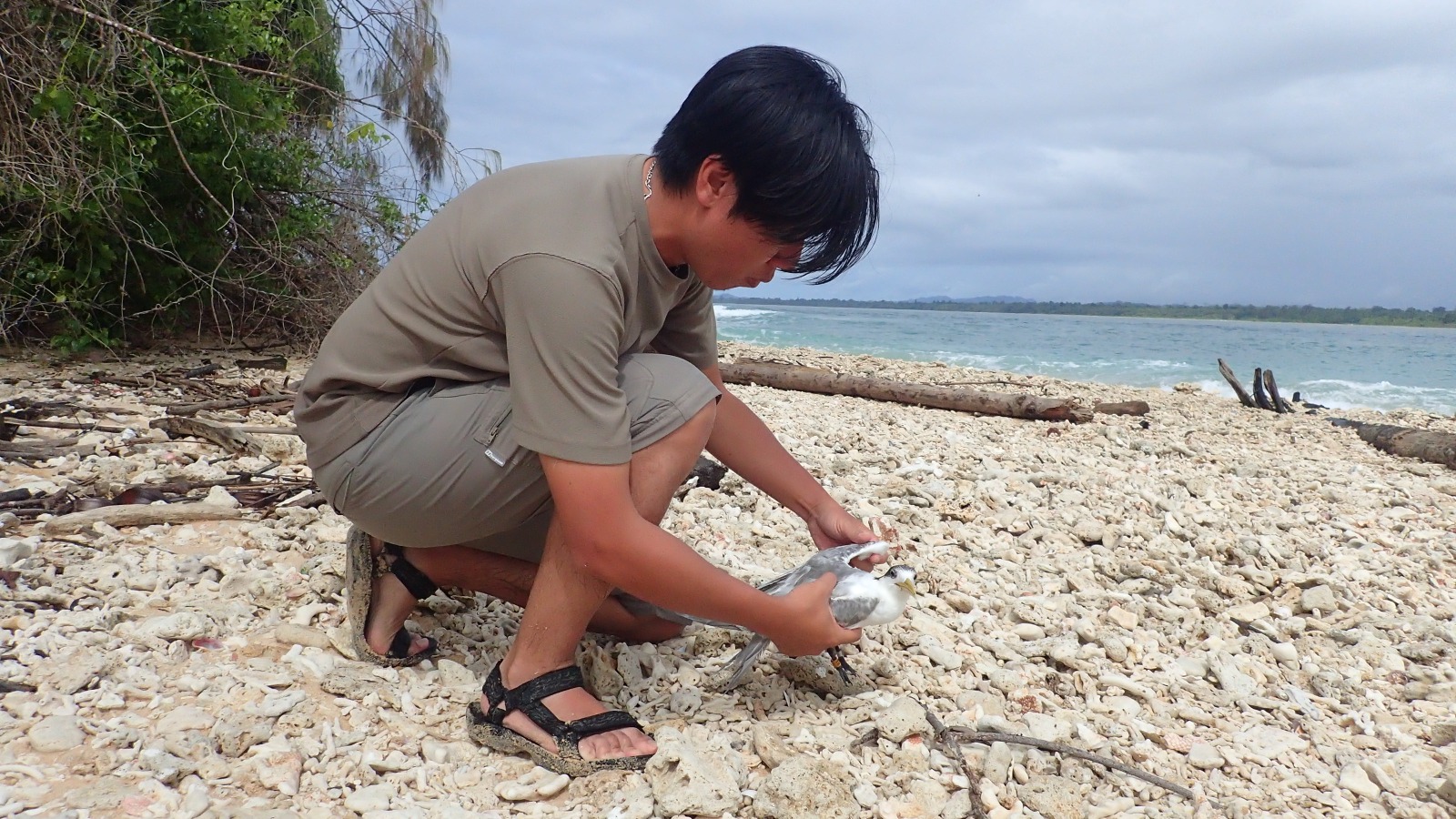 |
 |
The Chinese Crested Tern which remains less than 100 individuals all over the world is a critically-endangered species under the IUCN Red List. The Hong Kong Bird Watching Society (HKBWS) has been launching the “Chinese Crested Tern Satellite Tracking Programme” since 2018 to discover the migration route of this legendary bird. Conservation organisations and government departments along the migration route will be invited to join hands in conserving this bird and its habitat.
The HKBWS is honoured to have the support from China Aircraft Leasing Group Holdings Limited (CALC) to launch a 12-month Chinese Crested Tern Satellite Tracking Programme. By conducting surveys and scientific research, we are able to know more about this critically-endangered species, particularly their migration routes and wintering sites. The research team arrived in an island of Indonesia on 13 February 2019 where a single Chinese Crested Tern was seen. The first stage of the tracking programme was started.

This Chinese Crested Tern (centre) was found wintering in Indonesia. The research team aims to fit a satellite transmitter onto the bird to track the migration routes in order to protect this bird and its habitats.

Mr Yu Yat Tung, Research Manager of HKBWS introduced the Chinese Crested Tern and the mission of the research team to the local conservation groups and government in Indonesia.
Mr Yu Yat Tung, Research Manager of HKBWS released a Greater Crested Tern fitted with satellite transmitter in the wintering island of Indonesia.

Mr Lam Chiu Ying, Honorary President of HKBWS received a cheque of HKD296,000 from Mr Mike Poon, CEO of CALC and expressed our sincere gratitude to CALC for their support and concern towards Chinese Crested Tern Satellite Tracking Programme.
The research team has been monitoring the activities of the Chinese Crested Tern in Indonesia over the past few years. But no action has been taken yet. After a year of preparation, the operation finally launched with the support of international research team including a tern expert from the US, local bird conservation groups and government officials of Indonesia. The ultimate goal of this operation is to capture the Chinese Crested Tern and to discover its migration routes and habitat, and then to encourage the governments of these places to conserve these habitats.
After two days of operation, the team still could not get the Chinese Crested Tern into the trap set. The shortest distance between the bird and the trap was no more than 2 meter. This bird was extremely alert that the research team has to modify their operation plan. It was decided to capture the Greater Crested Terns which belong to the same community instead of the Chinese Crested Tern. Finally, two Greater Crested Tern were fitted with satellite transmitter and ring, and another one with a ring only. The reason is that Chinese Crested Tern was found staying with Greater Crested Tern in some previous research. Therefore, knowing the migration route of Greater Crested Tern may help us to know the route of Chinese Crested Tern. Today, we can still receive the satellite signal from these two Greater Crested Tern since the operation day.
Although the team could not fit the satellite transmitter onto the Chinese Crested Tern this year, we were able to raise the awareness of the local government and the bird conservation organization on this bird by reporting the situation and the future conservation action for this bird which is an important achievement of this operation. It was very encouraging to know that they have committed to conserving the Chinese Crested Tern in Indonesia to the best of their abilities.
We would like to take this opportunity to express our sincere gratitude to CALC for their support and concern towards the conservation of endangered bird, in particular this legendary bird in Indonesia. We also encourage everyone of us to support the China Crested Tern Satellite Tracking Programme. The research team will conduct another operation in the coming winter to complete the unfinished conservation dream and mission.



